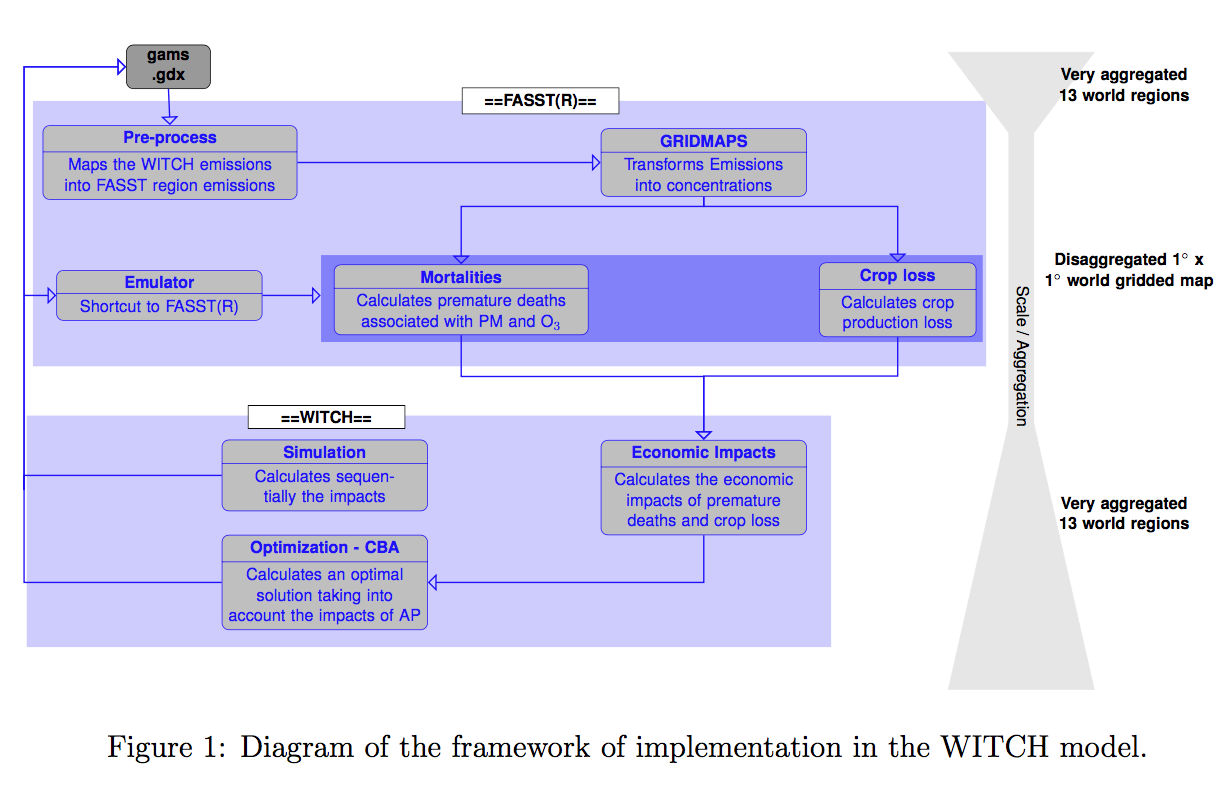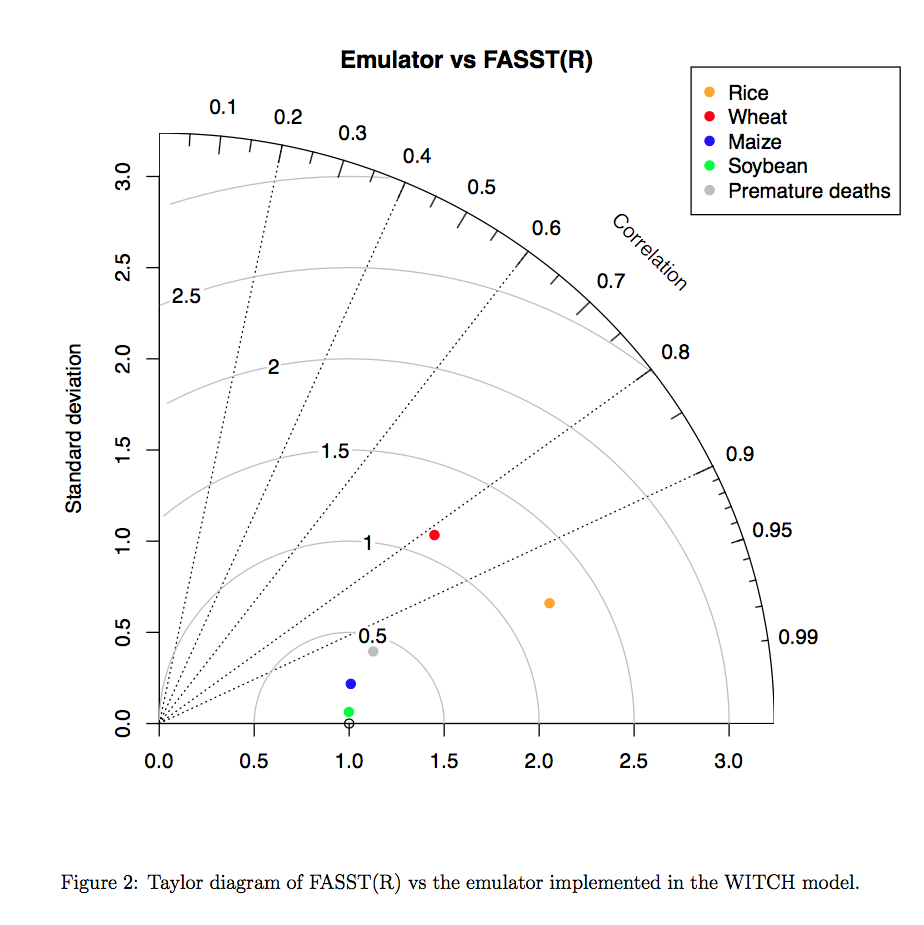FASST(R)
Air pollution model
A fast chemistry transport model to compute the annual concentrations of several pollutants
FASST(R) - FAst Scenario Screening Tool is a fast chemistry transport model to compute the annual concentrations of several pollutants.
FASST(R) is a fast chemistry transport model, an R version of the reduced-form TM5- FASST model developed at JRC-Ispra, to compute the annual concentrations of several pollutants p, namely SO 2 , NO x , fine Particulate Matter (PM 2.5 ) and O 3 . TM5-FASST is a source-receptor reduced-form model of TM5 full chemical transport model [2].
 The fine PM 2.5 include Particulate Organic Matter (POM), secondary inorganic PM, dust and sea-salt. The FASST(R) model produces concentrations on a world spatial grid of resolution of 1 ◦ × 1 ◦ . The FASST model has already been previously used in other studies to assess premature death from air pollution exposure [4]. It includes an urban increment algorithm in order to account for the population distribution and the distribution of PM concentrations [3]. The FASST model full validation against TM5 can be found in [5] and more informally in [3]. According to these studies, FASST performs well in comparison with the full chemical transport model TM5 and its reduced form does not compromise the output validity.
The fine PM 2.5 include Particulate Organic Matter (POM), secondary inorganic PM, dust and sea-salt. The FASST(R) model produces concentrations on a world spatial grid of resolution of 1 ◦ × 1 ◦ . The FASST model has already been previously used in other studies to assess premature death from air pollution exposure [4]. It includes an urban increment algorithm in order to account for the population distribution and the distribution of PM concentrations [3]. The FASST model full validation against TM5 can be found in [5] and more informally in [3]. According to these studies, FASST performs well in comparison with the full chemical transport model TM5 and its reduced form does not compromise the output validity.
The macro-regions emissions are pre-processed in order to obtain world gridded emissions using the Global Energy Assessment [1] as a proxy to disaggregate emissions spatially, as in [3].
This version of FASST(R) was designed to be directly plugged to the WITCH output in order to sequentially calculate the air quality outcomes of a given scenario. It calculates concentrations, premature death from exposure to Ozone and PM 2.5, and crop loss due to Ozone.

[1] GEA. Global energy assessment: Toward a sustainable future, 2017.
[2] M. Krol, S. Houweling, B. Bregman, M. van den Broek, A. Segers, P. van Velthoven, W. Peters, F. Dentener, and P. Bergamaschi. The two-way nested global chemistry transport zoom model tm5: algorithm and applications. Atmospheric Chemistry and Physics, 5(2):417{432, 2005.
[3] J Leitao, R. Van Dingenen, and S. Rao. Report on spatial emissions downscaling and concentrations for health impacts assessment. Technical Report 109.2015, IIASA, Milan, 2013.
[4] Shilpa Rao, Zbigniew Klimont, Joana Leitao, Keywan Riahi, Rita van Dingenen, Lara Aleluia Reis, Katherine Calvin, Frank Dentener, Laurent Drouet, Shinichiro Fuji-mori, Mathijs Harmsen, Gunnar Luderer, Chris Heyes, Jessica Streer, Massimo Tavoni, and Detlef P van Vuuren. A multi-model assessment of the co-bene_ts of climate mitigation for global air quality. Environmental Research Letters, 11(12):124013, 2016.
[5] R. Van Dingenen, F. Dentener, M. Crippa, J. Leitao, E. Marmer, S. Rao, E. Solazzo, and L. Valentini. Tm5-fasst: a global atmospheric source-receptor model for rapid impact analysis of emission changes on air quality and short-lived climate pollutants. Atmo- spheric Chemistry and Physics Discussions, 2018:1{55, 2018.
A fast chemistry transport model to compute the annual concentrations of several pollutants
http://tm5-fasst.jrc.ec.europa.eu